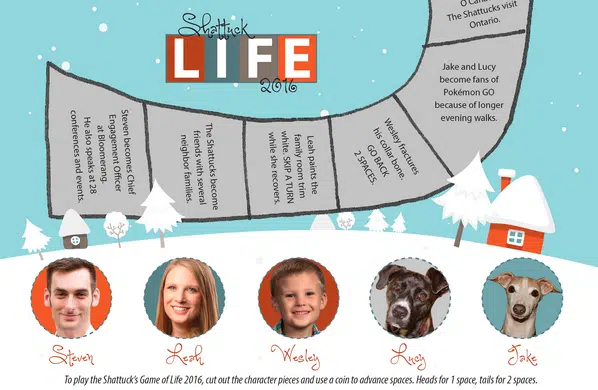Year-End Appeals: Avoid the Family Holiday Letter Approach


Full Platform Overview Chat With Us



Full Platform Overview Chat With Us




If your household is anything like mine, two types of mail begin to flood your mailbox starting the weekend after Thanksgiving: nonprofit year-end appeals and holiday letters from family and friends.
This past Saturday my wife and I were opening and reading both types.
She, gravitating towards the holiday letters, snickered at how self-congratulatory and impersonal many were. Me, gravitating towards the holiday fundraising appeals, snickered for the same reasons. Seeing them both side by side illuminated how similar in style and content they were.
And this isn’t a good thing.
Here are a few similarities I noticed:
1. Writing for one audience
I am sure that the same holiday letters we received are the same versions that everyone on their mailing list received, meaning no personalization was attempted.
Hopefully, your appeals are segmented and customized based on things like previous donation amount(s), donation frequency, campaign or fund preference, or any of a multitude of individual donor attributes that can be collected throughout the year. Adding handwritten notes or a signature is a great way to show that you didn’t just print off 1000 of the same letters, stuff them in envelopes and send them on their way.
2. Only talking about yourself
Holiday letters are typically self-congratulatory recaps of all the great things that family experienced (with some struggles thrown in) throughout the previous year.
Is your year-end appeal the same? Or do you put the spotlight on the recipient – the donor – and thank them for everything they accomplished through their generous gift?
If you have awesome news to share, why wait until the end of the year to share it all at once? Remember, donors don’t operate on your timeline. Just because your year-end (fiscal or calendar) is significant to your operation, doesn’t mean that it’s significant to their philanthropic goals.
3. Writing to people who have lost touch
While opening holiday letters, my wife and I (usually me) will often ask the other “who are they again?” before searching for them on Facebook to match a face with the name. We get letters and cards from people we haven’t seen or heard from in years, some of whom our connection to is distant or dubious at best.
When segmenting your year-end appeal, pay close attention to the timing of their last gift. You don’t have to give up completely on a lapsed donor (2+ years without donating), but you should do something different for them. Before sending out a big appeal, consider investing in an NCOA or Deceased Suppression Process that can help clean up your list and improve deliverability rates.
4. Not doing something to stand out from the crowd
By New Year’s Day, our mantel will be filled with holiday letters and cards – most of them looking about the same. We will have also opened just as many similar-looking/sounding appeals.
But you the fundraiser aren’t aiming for a place on the mantel or fridge – you’re aiming for action on the recipient’s part. That’s why it’s so critical that your appeals immediately get their attention, as you’ll be competing with several other appeals throughout the month of December.
I’ll leave you with the 2016 Shattuck holiday letter/card. Hopefully it earns more spaces on the mantel than in a recycling bin.
What’s your strategy for year-end appeals? Let me know in the comments below!


Comments